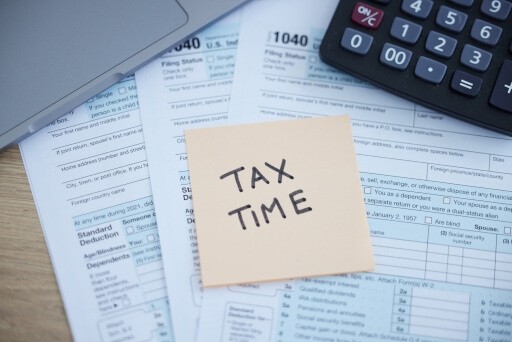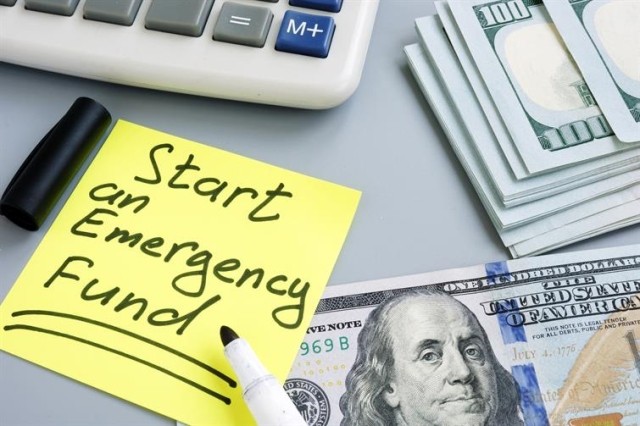Tenant turnover is readying your rental unit for a new tenant after the previous tenant moves out. Tenant turnover fees can include:
- Cleaning the unit
- Repairing damage
- Advertising your rental
- Absorbing the cost of the utilities and the mortgage while it remains vacant.
While these expenses can vary, they can also add up quickly. The average turnover cost ranges from $1,000 to $5,000. With a figure so high, it’s understandable landlords try to avoid tenant turnover at all costs. But is it possible to cut costs while preparing your unit for a new renter?
While tenant turnover costs aren't entirely avoidable, some associated fees are preventable. The first step in preventing high turnover expenses for your property is learning what contributes to the charges, how long the process usually takes, and how you can prepare beforehand for the impact.
Why Does Tenant Turnover Happen?
Tenant turnover happens for various reasons. While some instances of turnover are predictable, others are not. Typically, tenant turnover occurs after:
-
The lease contract ends – Following the end of a lease agreement, tenants typically have the option to renew their lease contract. However, some tenants choose to relocate. The result is the beginning of the tenant turnover process. When their lease contract ends, tenants vacate the property. Then, landlords refund the security deposit and begin the journey toward finding a new tenant.
-
The tenant breaks the lease – This occurs when a tenant decides to leave the property early. For example, if the lease contract states the tenant should live in the unit for 12 months, but the tenant leaves after six, landlords must then turn over the property.
-
The tenant subleases the unit – Similar to breaking the lease, subleasing occurs when a tenant leaves the rental property. After the tenant leaves, they rent out the unit to another individual until the end of the original lease contract. While the tenant turnover process is shorter for subleases, landlords must still prepare their property for the sublessor after the original tenant vacates.
-
Eviction – Eviction happens when a landlord forcibly removes a tenant from their property through due process. From failing to pay rent on time to violating the lease agreement’s rules, there are various reasons for eviction. However, the tenant turnover process afterward remains the same.
Anytime your tenant vacates your property without intent to return, you must prepare to turnover your unit for a new tenant. These events can happen predictably or without notice. Thus, landlords should prepare to absorb tenant turnover costs beforehand.
Which Factors Affect Tenant Turnover Costs?
Tenant turnover costs can add up, but what contributes to the expensive bill? The cost can range depending on whether the landlord completes the tasks or hires a company. However, when landlords face tenant turnover, they generally must prepare to pay for:
-
Administration – While optional, it is wise to hire a lawyer to create, analyze, and review the lease agreement you plan to offer new tenants. To do so, you must prepare to pay all legal fees beforehand.
-
Marketing – Refilling a unit after a tenant vacates is of utmost importance to landlords. To reach an audience of potential renters, landlords must advertise their property. Whether printing out flyers to hang across the neighborhood or paying a professional property manager, realtor, or another service to do the hard work for you, marketing your property comes with a cost.
-
Cleaning – Landlords must clean their rental once a tenant moves out. This includes disinfecting the apartment’s surfaces, cleaning appliances such as the refrigerator and oven, removing stains from the flooring, and scrubbing all bathroom surfaces. If the previous tenant leaves trash or excessive filth, landlords should hire a professional cleaning service to dispose of trash properly and disinfect the unit.
-
Repair – If the old tenant leaves excessive damage, such as holes in the walls, you’ll need to repair the issue before a new tenant moves in. Most times, if landlords find damage during the move-out inspection, they can deduct the repair costs from the previous tenant’s security deposit. However, landlords may need to fix the damage quickly if a tenant vacates the property or refuses to pay. Depending on the damage, repairs can be an expensive contributor to tenant turnover costs.
-
Vacancy – Vacancy can be the most significant contributor to tenant turnover costs. When a rental unit is left unoccupied, landlords must absorb the mortgage cost and utilities until a new tenant can move in. Depending on the market’s current demand, your apartment may face vacancy for a long time. When an apartment is vacant, landlords lose their monthly income and must pay hundreds of dollars monthly in mortgage fees.
While the costs associated with tenant turnover may seem small, they can add up quickly. Thus, ensuring your marketing, cleaning, repair, and vacancy fees don’t take you by surprise is essential.
How are Tenant Turnover Costs Different from Routine Maintenance Costs?
While routine maintenance costs may overlap with tenant turnover costs, they are different. Turnover costs specifically stem from a tenant vacating your property. Maintenance costs refer to the fees a landlord regularly pays to upkeep the property. Generally, maintenance costs are high yet less frequent. This infrequency allows landlords time to save and account for the significant repairs when needed.
Routine maintenance usually includes servicing appliances such as the HVAC or plumbing systems when they break. Tenant turnover costs can come unexpectedly, yet they are generally smaller and more frequent. These costs usually include cleaning, painting, changing lightbulbs, changing locks, fixing minor leaks, or patching holes in the walls.
Dealing with maintenance requests can often feel like a juggling act. You’ve got tenants reaching out, schedules to coordinate, and service professionals to contact. It can get hectic, but Apartments.com has the solution. With our online maintenance platform, tenants can submit maintenance requests online. We notify you when you have a request, and you can easily update your tenants as the repair progresses. You can even attach receipts, upload notes, and track expenses for the repairs. You and your tenants can even share images and videos. Keeping everything in one place makes it easy to keep track of repairs, how often something is requiring repair, and how future repairs might impact your budget.
Why Should Landlords Try to Avoid Tenant Turnover Costs?
Your rental property should be a financial benefit, not a financial burden. Tenant turnover costs can quickly exceed your budget. This can cause undue stress and cause you to fall behind on other responsibilities and payments. To avoid the extra anxiety, limit these costs as much as possible.
How to Avoid Costly Tenant Turnovers
There are several actions you can take to avoid costly tenant turnovers. The best way to mitigate turnover costs is to prevent them altogether. Always try to attract long-term renters with tenant retention. When a tenant continually renews their lease with you, the turnover costs disappear. After a tenant renews their lease, your only responsibility is to upkeep routine repairs. To help maintain a great landlord-tenant relationship and increase the chances of retention, ensure to:
-
Maintain open communication with your tenant throughout their lease term – Show your tenants you are open to communication. This communication can come in many forms, such as updating your tenants about rent increases or even checking in with a handwritten note. Whichever the method, fostering a meaningful relationship with clear communication may sway them to stay.
-
Respond promptly to your tenant’s maintenance concerns – Everyone appreciates feeling heard, and your tenants are no exception. If your renter informs you of an issue requiring servicing, promptly respond to and fix the problem.
-
Offer incentives – Tenants may wish to stay if you offer incentives. If you’re trying to increase retention, offer impetus such as discounted rent for a month or gift cards with the lease renewal.
-
Receive feedback – The best way to improve as a landlord is to listen to feedback. Ask your tenants to comment on aspects they loved as a renter and elements they believe you could improve on as a landlord.
Finally, since all expenses aren’t avoidable, a great way to curb turnover costs is to save up for them. This way, you’ll be prepared when circumstances out of your control arise.
A Simple Solution for Tracking Expenses
Struggling to keep track of your rising tenant turnover costs? Track your expenses with Apartments.com. Itemize each expense on one platform, and eradicate the need for spreadsheets or physical receipts. With the expense tracking system, you can monitor all the money you spend to ensure your rental is in its best condition for your next guest. After cataloging all purchases, assign them a tax category and export the master list in PDF for tax filing purposes. We know that tenant turnover costs can come knowingly or unexpectedly. Whichever is your case, mitigate the costs with Apartments.com.
Frequently Asked Question
How is an Apartment's Turnover Rate Calculated?
To calculate the tenant turnover rate, divide the number of tenants that moved out in a year by the total number of tenants you leased to in that year. By calculating the turnover rate, you can hypothesize the costs you’ll likely incur in the future.











